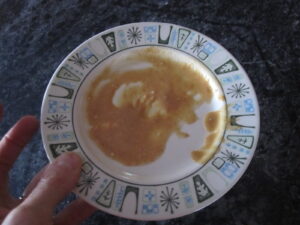“Some days I feel like I have the best job in the world.” Dr. Vishnu works at an FQHC-designated clinic in California. She calls me between the demands of work and parenting. “We are invited into people’s intimate lives and it really is an honor. I’m trying to hold that as the sacred trust that it is, in the midst of the uphill battle with the system as it is.”
I’m curious to learn her perspective. FQHC-designated clinics qualify for government grants, malpractice insurance, and reimbursement for taking care of Medicaid patients, in exchange for caring for anyone who walks in the door. Vishnu’s understanding is that her clinic is paid per patient visit, not for the number of problems you address or the specific tests you order.
This is very different from the production model of reimbursement and compensation previously described in this blog. Vishnu has been there, done that. She was perfectly willing to work hard. Her one request was that she be allowed to put a few holds in her schedule, small blocks of time with no patients, so that she could adequately address the needs of complex patients and stay relatively on-time. “Running behind isn’t respectful” of patients. The health system where she worked declined to allow her any scheduling control. She left.
Now Dr. Vishnu is on straight salary. I’m wondering if maybe this is the answer to the escalating productivity expectations described by Dr. Apollo in my last post. Nope. When many health systems switched to twenty-minute appointments, Vishnu’s clinic followed suit. “There’s no room in the system for phone calls, emergencies, getting lab information back to patients. And now patients can electronic message you,” generating more requests demanding attention in an entirely rigid schedule.
“When do you do the preventive medicine, the holistic approach? You either run late [with twenty-minute appointments], or you deal with one issue and then the patient has to come back.”
From an organizational perspective, bringing the patient back may have financial advantages. Vishnu, on the other hand, is acutely aware of the logistics faced by many of her patients as they try to make it to even one appointment. Arranging time off from work, child care, transportation. Missing work might mean losing income or even losing their job.
“There’s this constant push to do more,” Vishnu continues. “Every doctor that you’re seeing is doing their charts at home.” For each clinic day, she generally has two hours of work left to do at home. Or she’ll stay at work for an extra hour plus work through her lunch in an effort to complete her chart documentation. “And that’s actually really, really good compared to most of my colleagues.” Her colleagues routinely stay up till 1 am or get up at 5 am (before the kids awaken) to finish charting. “Basically we have an army of health professionals who are sleep-deprived, having relationship issues, and who aren’t doing all the healthy lifestyle things we preach to people to do.”
“It’s such a farce,” she says of the every-twenty schedule. Seeing the patient, making an assessment and plan for their conditions, documenting the visit in the electronic health record, entering all orders for tests and consults, and being ready for the next patient. And still connecting on a deep interpersonal level in the doctor-patient relationship. “Nobody can really do that.”
Dr. Vishnu is fluent in Spanish, an incredible asset for any clinic. Imagine conducting a patient visit in Spanish and simultaneously trying to type in English into the computer. The visit is twenty minutes. Maybe you, the reader, have been handed an AVS (After Visit Summary) at the end of an appointment, with a list of your diagnoses as well as a short-term plan for your health. There’s no easy way for Vishnu to generate a bilingual AVS unless she literally types everything twice.
“I don’t write in full-sentences,” Vishnu says. She charts in sentence fragments and the charting short-cuts called “dot phrases.” “The choice was be efficient or pay for it on the back end. My goal every day is not to have to open my computer when I get home. Bad weather can be a blessing because fewer patients come in and I can get caught up.” Bad weather in California is a rare occurrence.
“It’s so demoralizing,” this leaching of work into family life. “Not to have time with my partner, an hour or two doing charts on top of my long hours at clinic.” Vishnu caught some heat from her boss who wanted to know why she wasn’t checking work emails and attending meetings on her day off. She stood her ground. Her colleagues cover each other for urgent matters on off-days. “There is nothing that’s going to happen regarding my patients that I’m the only one smart enough to take care of. We need to rely on each other more. It’s this idea that we are these superheroes [who should simply deal with everything] – it wasn’t good for small-town docs years ago and it’s not good for us today.”
She talks of recent computer upgrades, where physicians were told, “’In your spare time you can play around with this.’ Imagine another profession where the tool you use is changed and you’re left to figure out how it works by yourself.” Doc meetings (unpaid) often happen before work or during lunch. “The ability to have any work/life balance is eroded away.”
I ask Vishnu what change she would make on a micro level. “Other than removing my boss?” We laugh and she goes on to describe a recent medical encounter. Dr. Vishnu had taken her mother to see a specialist and noted the impressive array of support staff: two PAs, an MA, and a nurse enabled the doctor to be optimally efficient. At Vishnu’s clinic, they ususally have an MA for each provider and an LPN for ten doctors. “The amount of stuff that could be done by somebody else but isn’t, due to budget, is incredible and highly inefficient.” She might be able to make the twenty-minute appointment work if she were adequately supported.
The macro change is easy. “I do not understand why we don’t have nationalized health care. We spend so much money on administration. I see so many people who have no insurance. And half the time the people with insurance are as bad off as the people with no insurance.” Vishnu recalls one of her patients, a 40-year-old with cancer. Despite an alarming symptom, he put off seeing the doctor for three months so that his visit would go toward the next year’s deductible. “People leave things until it’s too late,” when faced with the financial reality of their insurance deductibles. Why should a resident of a “developed” nation have to choose between paying for her prescriptions or buying her groceries? I shared this frustration when I worked in clinic. I naïvely thought patients should be able to make their medical decisions based on my medical advice.
“I think we need to go back to the point that practicing medicine encompasses knowledge and skills and a relationship,” Dr. Vishnu says. “The relationship is paramount, the care team is paramount to promote health. We don’t have systems in clinic or a society that supports that. We are disease-focused.” In Vishnu’s nationalized health plan Nirvana, each patient would have a baseline ninety-minute visit once a year, a preventive medicine and health assessment visit, where the physician and patient could sit down and discuss goals for health. “It’d be me and Michelle Obama in a room together [with the patient] and I’d do the health things and she’d get ‘em moving. And feed them kale.”
I ask Vishnu to describe her greatest joy as a physician. She talks about the satisfaction of working with her patients to make healthy changes such as quitting smoking or beginning an exercise program. “I also love seeing kids for well-child check-ups, healthy kids who are with competent parents. Seeing a nine-month old for a healthy baby visit, assuming they have competent parents, can fix a pretty bad day.”
Vishnu recalls an episode from a few years ago. She picked up her own child at daycare after work and was immediately called in to deliver a baby at the hospital. “I was delivering this baby and the aunts of the patient were holding my son.”
Family medicine at its best. People in community, taking the time to care for each other.
Thank you for taking the time to read this blog. If you want to stay in the conversation about physician burnout, please sign up for the blog below or in the upper right side of your screen. You’ll get an IMMEDIATE email asking you to confirm your subscription. If you don’t get the email, please check your spam folder. Thanks!
Vishnu is a Hindu God, the Protector of humanity. He is generally depicted with four arms. (I’m thinking extra arms could really enhance physician efficiency and improve work/life balance.)








